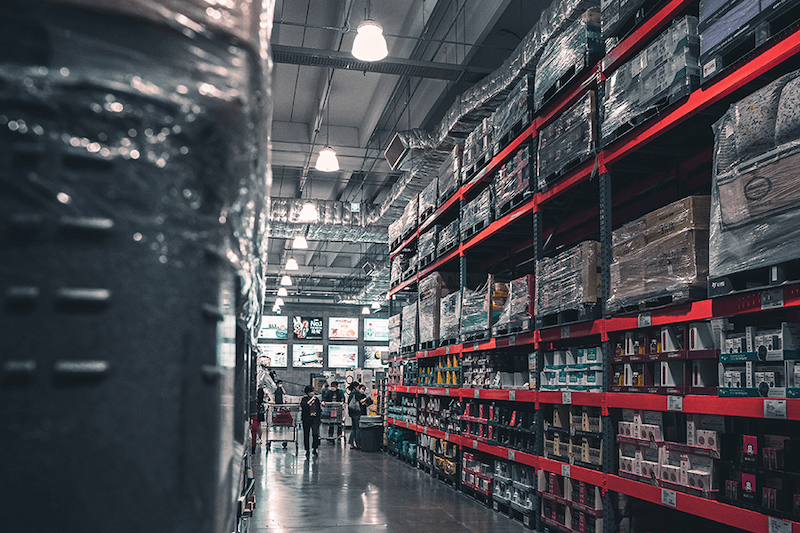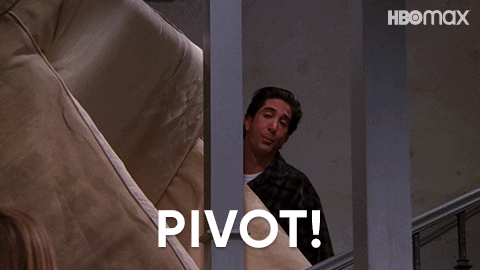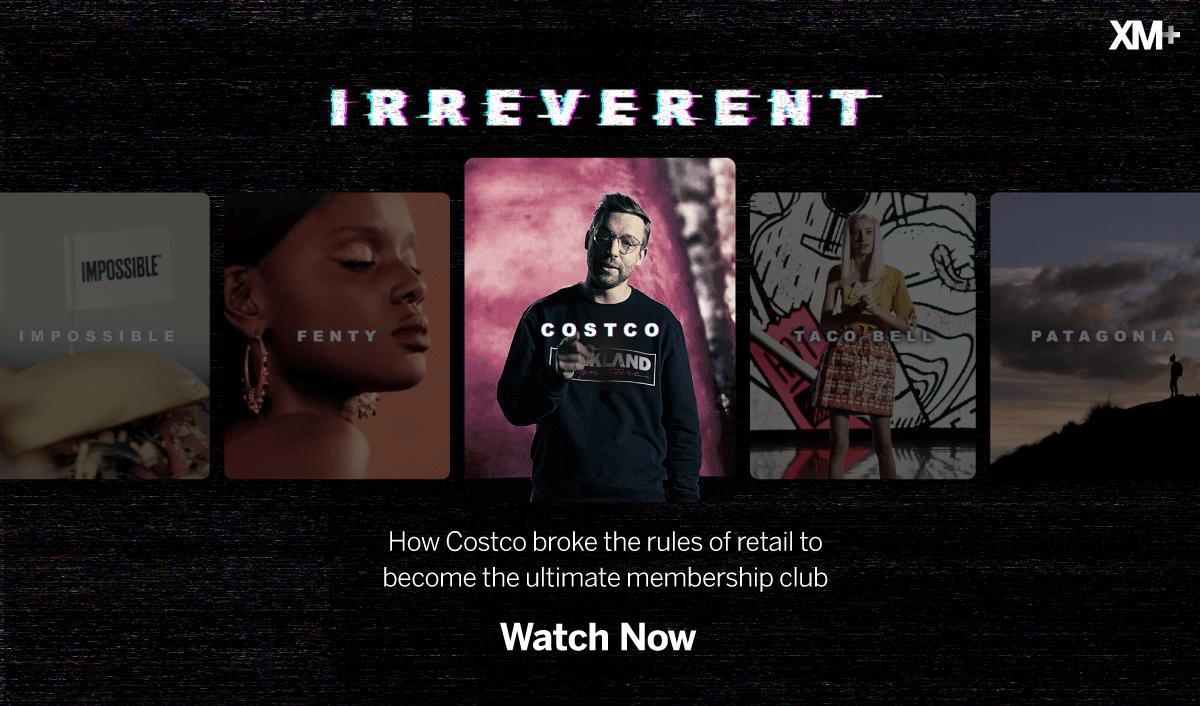Is less finally more? Can we complete a Costco run in less than an hour? If not, why?
Today, we answer these important questions.
If you’ve yet to visit a Costco, we’ve some age-old wisdom to share with you:
No wallet ever survives the encounter.
Most of us have just accepted it. When we visit Costco, there’s no such thing as just ‘dropping in’ or ‘picking up some odds and ends’, we always leave with more than intended.
(Not seen the Costco Irreverent episode on XM+? Go check it out now!)
Why? Well, it’s because Costco is a treasure trove. It has everything you could possibly want: food, drink, appliances, homeware, toiletries, accessories, books, clothing — all at a discount.
But here’s the most confusing part; Costco warehouses are plain, ludicrously large and have less flair, marketing and products than traditional stores. Look:

Yet somehow, they’re far more effective at convincing people to buy than anywhere else on the planet. Sorcery.
How?
Most of us suck at making decisions
Generally, we as humans are pretty bad at making decisions — just look at all the actors who turned down the role of Neo in The Matrix: Leonardo DiCaprio, Brad Pitt, Nicolas Cage…
Sure, these are larger-than-life examples and not necessarily representative of all of us, but the larger point is that we have a tendency to work within our comfort zones.
Here’s an example: think about the last time you told yourself you’d try something new from your favorite Indian restaurant with more than 25 different curries. Did you? Probably not.
Or what about when you turn on the TV and tell yourself you’re going to watch a brand-new show but ultimately end up repeating Friends for the thousandth time?

So while many of us like the idea of novelty, there’s security in familiarity. We choose that which we know because we can’t go wrong.
But Costco, unlike other retailers and supermarkets, makes it easy for us to choose by eliminating all of the low-quality alternatives we should avoid.
Costco makes the challenge of ‘choice’ simple
In his bestselling book entitled The Paradox of Choice: Why More is Less (2004), Barry Schwartz writes about the ‘negative consequences of having too many options’. The central idea being that an overabundance of options can lead to anxiety, indecision, paralysis and dissatisfaction.
We’ve all been burnt by the negative consequences of choice. We get super excited about trying something new and then we’re heartbroken when it doesn’t meet our expectations.
However, instead of bombarding customers with ‘an overabundance of options’, Costco presents a curated assortment of products based on quality, price, brand and features, offering its members the best value. Food, drink, household items, toiletries, clothing — you name it — every item has been judiciously selected.
For perspective, the average Walmart and Target offer customers 120,000 and 80,000 stock keeping units (SKU) respectively.
Costco warehouses have curated it down to about 4,000.
But even Costco has room for “improvement”: the ever-popular Aldi (owner of Trader Joe’s) only has 1,400.
We’ve all experienced shopping with our parents when we were children — we’d spend what felt like hours roaming the aisles aimlessly as our mother and/or father failed to choose what they needed. They’d weigh up brands and prices incessantly, trying to find the best deals before giving up entirely. What a waste of 30 minutes. Well, on to the next aisle…
So by scaling down, Costco makes it infinitely easier for customers to choose and choose comfortably, knowing that whatever their choice, the quality is there. You can pick something up and not be disappointed.
Add to this the almost universal appreciation of Costco, spread via social media, word-of-mouth, friends, family and colleagues, and customers have no reason to doubt the value of what we’re being shown.
Make it easy for people to love you
Now we’re not suggesting that we all give up ‘choice’, far from it. You still have your Trader Joe’s and corner stores for ad-hoc, in-the-moment shopping or when you need something specific without flashing a membership card at the door.
You go to Costco when you want security, bulk and value, and this kind of mentality has become increasingly prevalent in today’s society.
People aren’t doing daily or weekly shops anymore — they’re buying en masse.
What’s abundantly clear is that taking a value-based approach to shopping and retail, e.g. choosing the highest-quality items for sale, increases the likelihood of satisfaction and streamlines the shopping experience.
Another great example of this is IKEA. IKEA is the literal embodiment of value and simplicity. The Swedish-founded, Dutch-headquarted conglomerate designs and sells some of the most affordable, yet stylish, furniture around.

People enjoy going to IKEA (and let’s not get started on the meatballs) because it’s an experience. It’s designed so that you look at as many different products as possible, while what you need is strategically placed at the end of the store’s ‘maze’. But guess what? Most of us are happy to take a look.
Put simply: Costco doesn’t eliminate choice, it optimizes selection by only ever offering the best of the best. It eliminates the unimportant things so that customers can focus.
And in a world inundated with products, services and unimportant things: focus is exactly what people want and need right now.
Looking for more?
Explore why brands like Costco, Fenty, Impossible and Patagonia are loved by customers in the Irreverent docu-series. Dive into the future of the workplace experience in Work: New.0. And finally, hear from creators and brands who are paving the way for better and more human experiences, and the technology helping them to do it.

